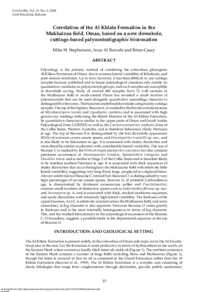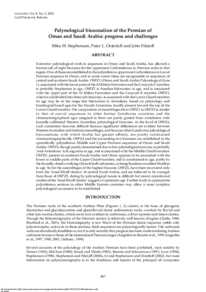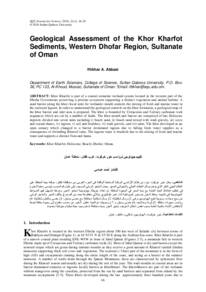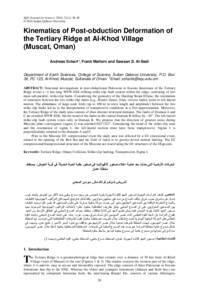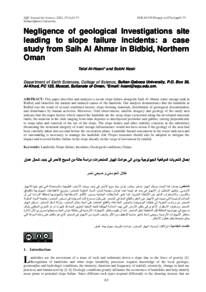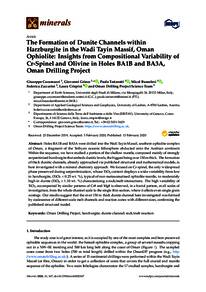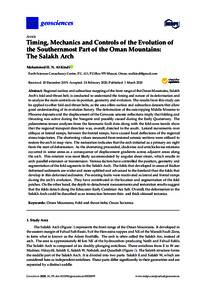وثيقة
Correlation of the Al Khlata formation in the Mukhaizna field, Oman, based on a new downhole, cuttings-based palynostratigraphic biozonation.
المعرف
DOI: 10.2113/geoarabia130315
المصدر
GeoArabia. V. 13, 3, P. 15-34
المساهمون
Al-Rawahiyah, Asya., مؤلف
Casey, Brian., مؤلف
الدولة
Bahrain.
مكان النشر
Manama
الناشر
Gulf PetroLink.
ميلادي
2008-07-01
اللغة
الأنجليزية
الموضوع
الملخص الإنجليزي
Palynology is the primary method of correlating the subsurface glaciogenic Al Khlata Formation of Oman, due to extreme lateral variability of lithofacies, and poor seismic resolution. Up to now, however, it has been difficult to use cuttings samples because published and in-house palynological zonations rely mainly on quantitative variations in palynomorph groups, and such samples are susceptible to downhole caving. Study of around 400 samples from 12 well sections in the Mukhaizna field in south-central Oman has revealed a small number of palynomorphs that can be used alongside quantitative assemblage character to distinguish five biozones. The biozones are defined downhole using mainly cuttings samples. The top of the highest, Biozone A, is marked by the first downhole increase of Microbaculispora tentula and Cycadopites cymbatus and is associated with high gamma-ray readings indicating the Rahab Member of the Al Khlata Formation. Its quantitative character is similar to the upper parts of Oman and Saudi Arabia Palynological Zone 2 (OSPZ2) as well as the Converrucosisporites confluens Zone of the Collie Basin, Western Australia, and is therefore Sakmarian (Early Permian) in age. The top of Biozone B is distinguished by the first downhole appearance (FDA) of common cavate-zonate spores, and Densoisporites truswellii sp. nov., and is also likely to be Sakmarian in age. It is associated with shaley diamictites and more distal lacustrine mudstones with considerable lateral variability. The top of Biozone C is marked by the FDA of Anapiculatisporites concinnus but also contains persistent occurrences of Ahrensisporites cristatus, Spelaeotriletes triangulus and Deusilites tentus and is similar to Stage 2 of the Collie Basin and is therefore likely to be Asselian (earliest Permian) in age. It is associated with thick sequences of shaley diamictites that occur throughout the Mukhaizna field with relatively little lateral variability, suggesting very long-lived, large, proglacial or subglacial lakes. A lower subdivision of Biozone C, termed Sub-Biozone C1 is distinguished by very high percentages of cavate-zonate spores. Biozone D, of probable Carboniferous age, is characterised by dominant monosaccate pollen and Punctatisporites, contains small numbers of distinctive spores such as Indotriradites fibrosus sp. nov. and Auroraspora sp. A, and is associated with thick, stacked sandstone sequences and sandy diamictites with extremely high lateral variability. The thickness of the upper biozones, A to C, is relatively constant across the Mukhaizna field, and some consistency in log character is also apparent. However Biozone D varies greatly in thickness and is the most internally heterogeneous in terms of log character. This, and the marked discontinuity in the palynological succession at the Biozone C/D boundary, suggests a possible break in the depositional sequence at the top of Biozone D.
الوصف
GeoArabia
Volume 13, Issue 3, 2008, Pages 15-34
Volume 13, Issue 3, 2008, Pages 15-34
ISSN
1025-6059
قالب العنصر
مقالات الدوريات

